Aging and vascular endothelial function in humans
- PMID: 21244363
- PMCID: PMC3482987
- DOI: 10.1042/CS20100476
Aging and vascular endothelial function in humans
Abstract
Advancing age is the major risk factor for the development of CVD (cardiovascular diseases). This is attributable, in part, to the development of vascular endothelial dysfunction, as indicated by reduced peripheral artery EDD (endothelium-dependent dilation) in response to chemical [typically ACh (acetylcholine)] or mechanical (intravascular shear) stimuli. Reduced bioavailability of the endothelium-synthesized dilating molecule NO (nitric oxide) as a result of oxidative stress is the key mechanism mediating reduced EDD with aging. Vascular oxidative stress increases with age as a consequence of greater production of reactive oxygen species (e.g. superoxide) without a compensatory increase in antioxidant defences. Sources of increased superoxide production include up-regulation of the oxidant enzyme NADPH oxidase, uncoupling of the normally NO-producing enzyme, eNOS (endothelial NO synthase) (due to reduced availability of the cofactor tetrahydrobiopterin) and increased mitochondrial synthesis during oxidative phosphorylation. Increased bioactivity of the potent endothelial-derived constricting factor ET-1 (endothelin-1), reduced endothelial production of/responsiveness to dilatory prostaglandins, the development of vascular inflammation, formation of AGEs (advanced glycation end-products), an increased rate of endothelial apoptosis and reduced expression of oestrogen receptor α (in postmenopausal females) also probably contribute to impaired EDD with aging. Several lifestyle and biological factors modulate vascular endothelial function with aging, including regular aerobic exercise, dietary factors (e.g. processed compared with non-processed foods), body weight/fatness, vitamin D status, menopause/oestrogen deficiency and a number of conventional and non-conventional risk factors for CVD. Given the number of older adults now and in the future, more information is needed on effective strategies for the prevention and treatment of vascular endothelial aging.
Figures

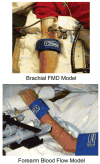
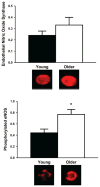

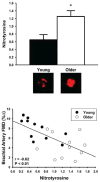

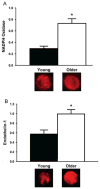

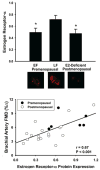
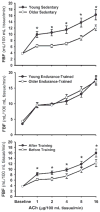
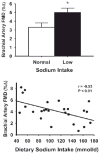





References
-
- Lloyd-Jones D, Adams RJ, Brown TM, Carnethon M, Dai S, De Simone G, Ferguson TB, Ford E, Furie K, Gillespie C, et al. Heart disease and stroke statistics –2010 update: a report from the American Heart Association. Circulation. 2010;121:e46–e215. - PubMed
-
- Lakatta EG, Levy D. Arterial and cardiac aging: major shareholders in cardiovascular disease enterprises: Part I: aging arteries: a ‘set up’ for vascular disease. Circulation. 2003;107:139–146. - PubMed
-
- Brandes RP, Fleming I, Busse R. Endothelial aging. Cardiovasc Res. 2005;66:286–294. - PubMed
-
- Bonetti PO, Lerman LO, Lerman A. Endothelial dysfunction: a marker of atherosclerotic risk. Arterioscler Thromb Vasc Biol. 2003;23:168–175. - PubMed
-
- Widlansky ME, Gokce N, Keaney JF, Jr, Vita JA. The clinical implications of endothelial dysfunction. J Am Coll Cardiol. 2003;42:1149–1160. - PubMed
Publication types
MeSH terms
Substances
Grants and funding
- R01 AG031141/AG/NIA NIH HHS/United States
- M01 RR000051/RR/NCRR NIH HHS/United States
- R37 AG013038/AG/NIA NIH HHS/United States
- K01 AG029337/AG/NIA NIH HHS/United States
- AG006537/AG/NIA NIH HHS/United States
- F31 AG033994/AG/NIA NIH HHS/United States
- AG013038/AG/NIA NIH HHS/United States
- AG031141/AG/NIA NIH HHS/United States
- R21 AG043952/AG/NIA NIH HHS/United States
- AG022241/AG/NIA NIH HHS/United States
- RR00051/RR/NCRR NIH HHS/United States
- R01 AG013038/AG/NIA NIH HHS/United States
- R01 AG022241/AG/NIA NIH HHS/United States
- AG000279/AG/NIA NIH HHS/United States
- AG029337/AG/NIA NIH HHS/United States
- R01 AG006537/AG/NIA NIH HHS/United States
- R01 AG040297/AG/NIA NIH HHS/United States
- T32 AG000279/AG/NIA NIH HHS/United States
- AG033994/AG/NIA NIH HHS/United States
LinkOut - more resources
Full Text Sources
Other Literature Sources
Medical

